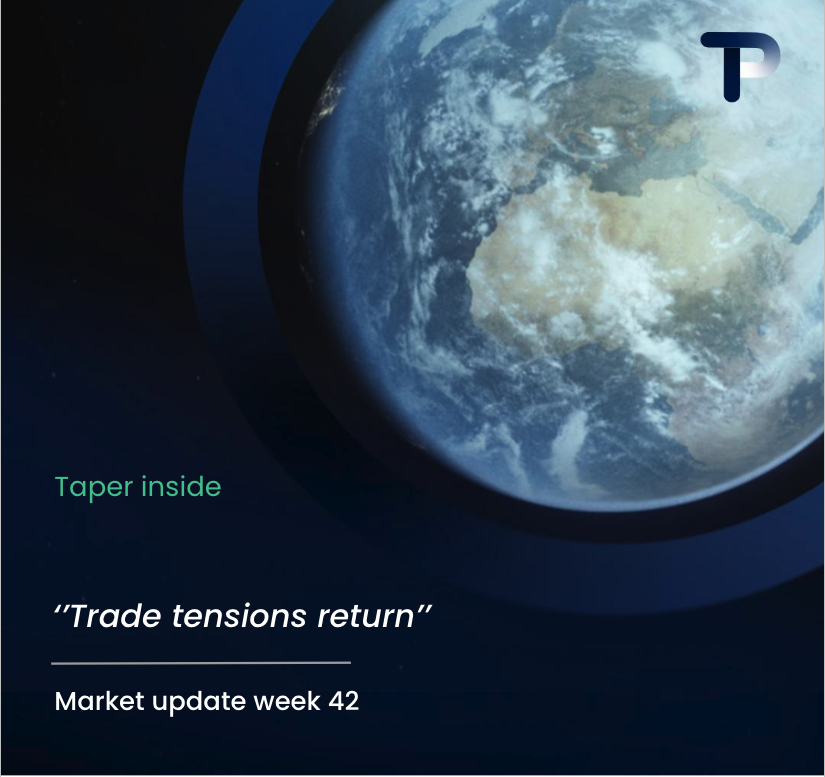SMEs can streamline supply chain payments in 2025 by implementing payment automation systems, adopting multi-currency digital platforms, and leveraging real-time payment technologies. These solutions reduce manual processing, eliminate currency exchange complexities, and provide better payment visibility whilst improving supplier relationships and cash flow management.
Why supply chain payment optimisation matters for SMEs in 2025
Supply chain payment optimisation directly impacts your business’s financial health and competitive positioning. When you streamline your payment processes, you improve cash flow predictability and strengthen supplier relationships through timely, accurate payments.
Modern SMEs face increasing pressure to compete with larger enterprises whilst managing tighter margins. Efficient payment systems give you the agility to respond quickly to market opportunities and maintain strong partnerships with international suppliers.
The shift towards digital-first business operations means suppliers increasingly expect faster, more transparent payment processes. Companies that maintain outdated payment methods risk losing preferred supplier status and missing out on early payment discounts that can significantly impact profitability.
Cash flow management becomes particularly important when dealing with international supply chains. Delays in payments can cascade through your entire operation, affecting inventory levels, production schedules, and ultimately customer satisfaction.
What are the biggest supply chain payment challenges facing SMEs today?
SMEs typically struggle with lengthy payment cycles, manual processing inefficiencies, and complex currency exchange requirements. These challenges create bottlenecks that affect supplier relationships and operational efficiency.
Manual invoice processing remains one of the most significant pain points. Many SMEs still rely on paper-based systems or basic spreadsheets, leading to errors, delays, and increased administrative costs. This manual approach makes it difficult to track payment status and maintain accurate records.
Currency exchange complexities present another major hurdle for internationally trading SMEs. Traditional banks often provide poor exchange rates and charge multiple fees for international transfers, significantly increasing the cost of supplier payments.
Payment visibility issues compound these problems. Without real-time tracking capabilities, you cannot provide suppliers with accurate payment status updates, leading to relationship strain and potential supply disruptions. This lack of transparency also makes cash flow forecasting extremely difficult.
| Challenge | Impact on Business | Common Solutions |
|---|---|---|
| Manual Processing | Increased errors, delays, higher costs | Digital payment platforms, automated workflows |
| Currency Exchange | Higher fees, poor rates, complex processes | Multi-currency accounts, specialist providers |
| Payment Visibility | Poor supplier relations, forecasting issues | Real-time tracking, integrated systems |
| Long Payment Cycles | Cash flow problems, supplier disputes | Automated scheduling, faster processing |
How can payment automation transform SME supply chain operations?
Payment automation eliminates manual tasks, reduces processing time, and improves accuracy across your entire supply chain payment process. Automated systems can handle invoice matching, approval workflows, and payment scheduling without human intervention.
Digital payment platforms integrate with your existing accounting systems to create seamless workflows. When an invoice arrives, the system automatically matches it against purchase orders, routes it for approval, and schedules payment according to your terms.
Automated scheduling ensures suppliers receive payments on time, every time. You can set up recurring payments for regular suppliers whilst maintaining flexibility for one-off transactions. This consistency improves supplier relationships and may qualify you for early payment discounts.
Integration capabilities allow your payment system to communicate with inventory management, procurement, and accounting software. This connectivity provides real-time visibility into your entire supply chain financial position and enables better decision-making.
Error reduction represents one of the most immediate benefits of automation. Manual data entry errors that can delay payments and damage supplier relationships become virtually eliminated when systems handle the processing automatically.
What digital payment solutions work best for international supply chains?
Multi-currency accounts, real-time payment systems, and integrated financial platforms provide the most effective solutions for international payments. These technologies eliminate traditional banking limitations whilst reducing costs and improving speed.
Multi-currency IBAN accounts allow you to hold and manage multiple currencies within a single platform. This eliminates the need for separate foreign bank accounts whilst providing local banking details to suppliers in different countries, reducing their receiving costs.
Real-time payment systems with SWIFT GPI tracking provide transparency throughout the payment process. You can monitor payment progress and provide suppliers with accurate delivery estimates, improving communication and trust.
Blockchain-based solutions offer enhanced security and transparency for high-value transactions. Whilst still emerging, these systems provide immutable transaction records and can reduce settlement times for complex international payments.
Integrated financial platforms combine payment processing, currency exchange, and cash flow management in one solution. This consolidation reduces the complexity of managing multiple banking relationships whilst providing better oversight of your international payment activities.
Key takeaways for implementing streamlined supply chain payments
Start by evaluating your current payment processes to identify the biggest inefficiencies and cost drivers. Focus on solutions that address your specific challenges rather than implementing comprehensive systems that may be unnecessarily complex.
Choose payment platforms that integrate with your existing accounting and procurement systems. Seamless integration ensures data flows smoothly between systems and reduces the risk of errors or duplicate data entry.
Prioritise solutions that offer multi-currency capabilities if you work with international suppliers. The ability to hold and transfer multiple currencies can significantly reduce exchange costs and simplify your financial management.
Consider the total cost of ownership when evaluating solutions. Look beyond initial setup costs to include ongoing transaction fees, exchange rate margins, and the value of time saved through automation.
Implement changes gradually to minimise disruption to existing supplier relationships. Start with high-volume or problematic payment routes before expanding to your entire supplier base.
For SMEs seeking comprehensive international payments solutions, TaperPay offers multi-currency IBAN accounts, competitive exchange rates, and personalised service designed specifically for businesses managing complex international supply chains. Our one-stop-shop approach eliminates the need to work with multiple banking partners whilst providing the transparency and efficiency modern supply chains demand.
Frequently Asked Questions
How long does it typically take to implement a payment automation system for my supply chain?
Implementation timeframes vary depending on your current systems and complexity, but most SMEs can have basic automation running within 2-4 weeks. Start with high-volume supplier payments first, then gradually expand to your entire supplier base over 2-3 months to minimize disruption and allow time for staff training.
What should I do if my suppliers resist switching to digital payment methods?
Focus on the benefits to suppliers: faster payments, better tracking, and reduced banking fees. Offer to maintain existing payment methods temporarily while demonstrating the new system's advantages. Many suppliers will switch once they see improved payment reliability and transparency.
How much can I realistically save on currency exchange costs with multi-currency accounts?
SMEs typically save 2-4% on exchange costs compared to traditional banks, which can amount to thousands annually for businesses with significant international payments. The exact savings depend on your payment volume and the currencies you use, but the cost reduction often pays for the platform within the first year.
What happens if an automated payment fails or gets rejected?
Modern payment platforms include automatic retry mechanisms and instant notifications for failed payments. Most systems will attempt alternative payment routes or alert you immediately so you can resolve issues quickly. Always ensure your platform provides real-time failure alerts and manual override capabilities.
Can I still maintain control over payment approvals with automated systems?
Yes, automation doesn't mean losing control. You can set approval thresholds, require multi-person authorization for large payments, and maintain manual review processes for new suppliers. Most platforms allow you to customize approval workflows to match your existing governance requirements.
How do I handle supplier onboarding when switching to a new payment system?
Create a phased onboarding plan starting with your most cooperative suppliers or those already using digital systems. Provide clear instructions, offer support during the transition, and consider running parallel systems briefly. Most suppliers adapt quickly when they see the benefits of faster, more reliable payments.
What security measures should I look for in a supply chain payment platform?
Ensure the platform offers bank-level encryption, two-factor authentication, and regulatory compliance (like PCI DSS). Look for features like transaction monitoring, fraud detection, and audit trails. The platform should also provide role-based access controls so you can limit who can initiate or approve payments.
Hi there! 👋 I see you're reading about multi-currency IBAN accounts for supply chain payments. Smart choice - these accounts can save businesses 2-4% on every international transaction!
What best describes your current situation with international supplier payments?
Which of these challenges are you currently facing with international payments? (Select all that apply)
What's driving your interest in multi-currency payment solutions? Tell us about your business goals or challenges.
Great! To help us understand your specific needs better, could you share more details about your international payment volume or any particular requirements?
Perfect! Let's connect you with one of our international payments specialists who can show you exactly how Taper's multi-currency IBAN accounts can save you money and streamline your supply chain payments.



